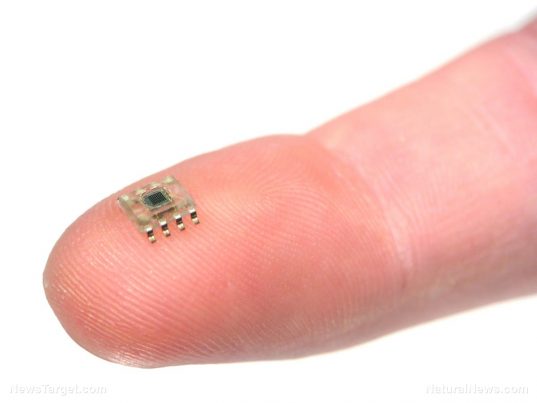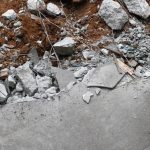
Scientists develop an extremely small and sensitive chip that can detect you by your smell
Tuesday, August 07, 2018 by Edsel Cook
http://www.naturalnewsresearch.com/2018-08-07-scientists-develop-an-extremely-small-and-sensitive-chip-that-can-detect-you-by-your-smell.html

Following a disaster such as an earthquake, search-and-rescue (SAR) dogs are often brought in to locate people trapped beneath the rubble. Their life-saving efforts may soon be supported by a new detection device that can sniff out the scent of humans just as keenly as dogs can, an article in Science Daily states.
Developed by Swiss engineers, the sensor device is no bigger than a computer chip. Its main advantages are that it can be deployed to disaster sites much faster than SAR dogs, can keep working nonstop with no rest breaks whatsoever, and can be inserted into passages that even the smallest canines cannot enter.
The ETH Zurich researchers drew from their prior work on compact gas sensors. The detectors are sensitive enough to pick up the minute amounts of acetone, ammonia, and isoprene that the human body gives off through breathing or the skin.
These chemical sensors were paired with commercially available equivalents that specialized in finding carbon dioxide and moisture.
The combination device underwent trials at the University of Innsbruck‘s Institute for Breath Research in Dornbirn, Austria. Individual volunteers spent two hours inside a test chamber in order to replicate entrapment underneath rubble.
Assisted by their Austrian and Cypriot colleagues, the Swiss researchers reported that the device successfully passed the trials. (Related: Study: South Korea’s largest earthquake was likely triggered by geothermal fracking.)
Tiny sensor looks for chemical gases emitted by the human body
Study author Andreas Güntner of ETH Zurich explained that the individual chemicals could originate from non-human sources. An underground source of carbon dioxide could turn out to be a buried person, but it could also prove to be a small fire.
Therefore, it was vital to get the right mix of gas sensors that covered different kinds of chemical compounds in order to get a reliable reading on the presence of entrapped people.
The Swiss researchers also remarked that humans release different compounds in different ways. Acetone and isoprene are commonly exhaled via the nose, while ammonia is expelled by the body through the skin.
In order to simulate these different breath and skin emissions, the participants wore breathing masks during the time they spent inside the test chamber. The exhaled air was channeled out of the chamber during the first half of the experiment and allowed to stay inside during the latter half.
The researchers used the readings from the two parts to create separate profiles for breath emissions and skin emissions.
The size of a computer chip and the sensitivity of a spectrometer
ETH Zurich professor Sotiris Pratsinis said the chemical sensors are as sensitive as ion-mobility spectrometers. Whereas the latter are as big as suitcases and cost thousands of dollars, the former is much cheaper and smaller.
“Our easy-to-handle sensor combination is by far the smallest and cheapest device that is sufficiently sensitive to detect entrapped people. In a next step, we would like to test it during real conditions, to see whether it is suited for use in searches after earthquakes or avalanches,” said Pratsinis.
Cameras and microphones are being used during search and rescue operations in the aftermath of earthquakes. These devices can assist in finding entrapped people who can still be seen beneath the ruins or are able to make enough noise to be heard.
Pratsinis and Güntner believe their chemical sensors will complement the existing devices. The gas sensors can be fitted aboard drones and small robots that can be sent into cramped and other inaccessible spaces.
The ETH Zurich team published their findings in the scientific journal Analytical Chemistry. They are currently searching for possible investors or partners who can help fund the construction of a prototype.
Read about more inventions that could save lives at Inventions.news.
Sources include:
Tagged Under: Tags: chemical sensors, detection device, Earthquakes, gas sensors, goodscience, goodtech, innovation, inventions, natural disasters, research, scent, search and rescue, sensor systems, sensors, smell, technology, tiny sensors





